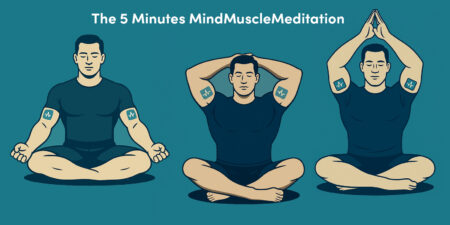Police work can be very stressful and can result in an increased risk of cardiovascular disease even in young recruits [1]. A new study has shown that just one hour a week of pranayama yoga can counteract this development and bring about significant improvement in cardiovascular risk factors [2].
Police work is often extremely stressful both physically and mentally and is therefore potentially associated with considerable stress due to a persistent discrepancy between the resources available and the demands placed on the individual [3]. Accordingly, studies on police officers have repeatedly shown a higher prevalence of mental illness [4], increased depression [5], burnout [6] and a higher suicide rate in police officers under particular stress [7]. However, stress also manifests itself physically in the form of elevated blood pressure, an increased development of metabolic syndrome and adverse changes in various blood parameters, which ultimately increase susceptibility to cardiovascular disease in this particular profession [8]. In a recently presented survey of cardiovascular risk factors in police recruits, who were on average just in their second year of training, 37 % of the men and 9 % of the women were already found to be overweight, 11% and 23%, respectively, had an increased waist circumference and 34 % and 47 %, respectively, were smokers [1]. Moreover, at least temporary hypertension was diagnosed in 19 % of the subjects, suggesting that, even in this group of relatively young and active individuals selected on the basis of their health, the risk of cardiovascular disease already increases during their period of training [1]. This would seem to be a potential issue particularly in view of the requirements for passing the police fitness examination as per German police service regulation 300 (PDV 300). The entry criteria for police officers rule out obesity and manifest hypertension, for example. In view of the high socioeconomic costs that arise with arterial hypertension and its sequelae (including stroke, myocardial infarction and chronic kidney disease), the use of preventive measures would therefore seem to be indicated.
One such long-tested and effective preventive measure that has already been well studied in some populations is yoga, which encourages physical and mental relaxation with concentration, muscle and breathing exercises [9]. As has been shown in numerous studies, yoga not only reduces stress levels but also results in significant improvements in cardiovascular risk factors, such as lower blood pressure, breathing rate and hip circumference, as well as in various serum parameters such as cholesterol, triglyceride and HbA1c levels and in insulin resistance [10 – 12]. To assess the efficacy of a yoga intervention and its usefulness in a police training programme as a potential way of improving cardiovascular health parameters, a prospective, randomised and controlled study was conducted, which involved the observation over six months of a total of 120 police recruits aged 18 – 39, 66.6 % of whom were male and 33.3 % female. Over this period, a yoga programme primarily involving breathing exercises (pranayama) was conducted with one training group for one hour a week under the guidance of a qualified yoga instructor, whilst the control group could spend this time as they wished. Both groups also received theoretical training in the use and benefits of yoga exercises. The yoga programme was chosen based on the evidence available regarding its efficacy in lowering blood pressure [13] and significantly improving lung capacity [14]. In conjunction with the yoga intervention, the blood pressure and heart rate of all subjects were measured and their age, height, weight , BMI and waist circumference recorded at the start of the study, after three months and after six months. Their ability to recover and distance themselves from their work was also surveyed by questionnaire (Recovery Experience Questionnaire, REQ [15], Perceived Stress Scale, PSS [16] and Resilience Scale, RS [17]).
The blood pressure measurements taken at the start of the study showed that a number of participants in both groups had elevated high blood pressure (20 % and 23 %, respectively, in the yoga training group and the control group). Over the course of the intervention, there was a significant fall in diastolic blood pressure measured in the right arm in the yoga training group after three and six months of weekly yoga training (p = 0.007), whereas there was a significant increase in the control group (p < 0.001). This change was even more marked in the participants with hypertension at the start of the study, with a significant fall in both systolic and diastolic blood pressure in both arms in the yoga training group (p < 0.004) but no change in the hypertensive participants in the control group. The REQ score surveyed by questionnaire increased in the yoga training group over six months by on average just under 4 points (p < 0.001) and fell at the same time by 3.5 points in the control participants (p < 0.001). The perceived stress levels fell significantly in the intervention group (p < 0.001) but, on the other hand, increased in the control group (p < 0.001). Finally, with yoga the resilience score improved by over four points (p = 0.001) compared to baseline, whereas without yoga it fell by more than two points (p = 0.001). Correlation analysis after Pearson showed a significant positive correlation between blood pressure and the perceived stress level and similarly between blood pressure and the REQ Score. Overall, high blood pressure correlates with high stress levels.
Conclusion
In summary, this study demonstrates the potential benefit of the type of yoga training described as a preventive measure. This applies both in terms of cardiovascular risk factors and reduced stress levels and increased resilience in young police officers in training. Both objectively measurable and subjectively perceived parameters that to some degree reflect the stress experienced showed significant improvements, whereas those without the yoga intervention either stayed the same or even continued to deteriorate. The intervention was effective both in healthy subjects and – even more pronounced – in those already diagnosed with high blood pressure and is therefore suitable as primary and secondary prevention. If one considers the comparatively little time and expense involved in the intervention of just one hour a week, the little equipment required and the ease with which it can be integrated into routine training, conducting such training seems advisable, from both a medical and financial point of view.
Autoren
ist Facharzt für Allgemeinmedizin, Zusatzbezeichnung Naturheilverfahren, und Lehrstuhlinhaber und Leiter des Instituts für Integrative Gesundheitsversorgung und Gesundheitsförderung (IGVF) der Universität Witten / Herdecke, wo er auch die dortige Universitätsambulanz im Sinne einer „Medizin von morgen“ gründete. Eines seiner zentralen Forschungsgebiete ist die Entwicklung von individuellem und kollektivem Glück bzw. Lebenszufriedenheit über die Lebensspanne, dazu Arbeiten zur Selbstregulation und dem hirneigenen Belohnungssystem, inklusive der Meditations- und Achtsamkeitsforschung.
studierte Verwaltungs-, Gesundheits- und Rechtswissenschaften, Öffentliches Recht und Management sowie Betriebswirtschaft. Er forscht primär im Bereich der kardiovaskulären Risikofaktoren, der Stressmanagementintervention, des Gesundheitserlebens und der -förderung sowie berufsassoziierter Krankheitsbilder im Bereich des Öffentlichen Dienstes. Er ist Lehrbeauftragter u.a. an der internationalen Berufsakademie (iba), der internationalen Studien- und Berufsakademie (isba) und der Thüringer Fachhochschule für Öffentliche Verwaltung und forscht aktuell an der Universität Witten/Herdecke im Bereich der Gesundheitsförderung.





